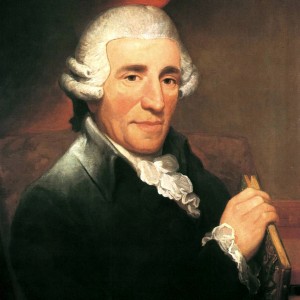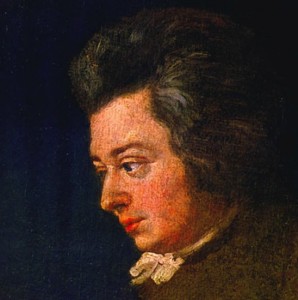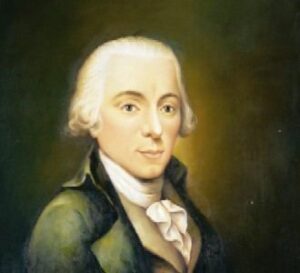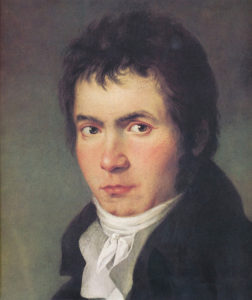Costanoan Trio Recreates the Intimate Soundworld of Four Classical Greats
The SFEMS 2019–2020 concert season begins in less than a month. We start early this year in terms of calendar but late in terms of repertory—or to give it Biblical significance, Behold! The last shall be first!
In recent years the cutting edge of historical performance has moved assuredly into the later 18th and 19th centuries, applying its methods and insights to music of the Classical and Romantic periods. Interpretation of that music was a major theme of the 2018 Berkeley Festival and has been the focus of several concerts on our series. A new group on the scene is the Costanoan Trio—Derek Tam, fortepiano; Cynthia Keiko Black, violin; and Frédéric Rosselet, cello—whose debut on our series will open our season. Representing “the best of emerging early music talent” (Early Music America), the Trio explores the piano trio repertoire of this period on historical instruments and attempts to recreate the world of domestic music-making in intimate concert spaces. Their SFEMS concerts, taking place the weekend of September 20–22, will feature trios by the four great composer-pianists of the late 18th century—Franz Joseph Haydn, Wolfgang Amadeus Mozart, Muzio Clementi, and Ludwig van Beethoven. Members of the Trio contributed the following notes on their program.

As with the string quartet and symphony, one could credibly consider Franz Joseph Haydn the father of the piano trio. By the publication of the B-flat major trio in 1794, Haydn had largely moved away from the idea of piano trios as glorified piano sonatas, even if the original title page still listed the violin and cello as mere “accompanimental” instruments.
 Written during the composer’s second sojourn to England between February 1794 and August 1795, the B-flat major trio was likely inspired pianistically by the robust fortepianos Haydn heard in London, particularly those made by the Broadwood company. (Incidentally, the Broadwoods had abandoned the harpsichord trade the year before, a clear indication as any that the centuries-long reign of the harpsichord as the keyboard instrument of choice was quickly drawing to a close.) From the outset, Haydn showcases a whole range of articulations possible only on the fortepiano, and the violin’s response is equally lyrical and exuberant. Despite a few stormy outbursts from the piano, the overall mood of the first movement is optimistic.
Written during the composer’s second sojourn to England between February 1794 and August 1795, the B-flat major trio was likely inspired pianistically by the robust fortepianos Haydn heard in London, particularly those made by the Broadwood company. (Incidentally, the Broadwoods had abandoned the harpsichord trade the year before, a clear indication as any that the centuries-long reign of the harpsichord as the keyboard instrument of choice was quickly drawing to a close.) From the outset, Haydn showcases a whole range of articulations possible only on the fortepiano, and the violin’s response is equally lyrical and exuberant. Despite a few stormy outbursts from the piano, the overall mood of the first movement is optimistic.
By contrast, the second movement starts intimately, with the opening theme played by the pianist’s left hand alone. Over the course of the movement, the figuration becomes more and more elaborate, with a surprise forte ending. This sets up the finale, a genial triple-meter dance movement that nonetheless has some harmonic surprises that would not be out of place in the music of the next generation.
* * *
 In the summer of 1788, Wolfgang Amadeus Mozart had just moved into bigger and cheaper digs outside of Vienna where he had a garden. Shortly after, he wrote to his friend Michael von Puchberg asking for help amidst financial struggles and assuring him that with more space, both physically and mentally, he would be more productive with his music in his new apartment. He added at the end of his letter, “When are you likely to have a little music again in your house? I have written a new trio.” This trio is the E-Major trio we play on our program, and we love it for its easy banter between three friends, right from the beginning when Mozart immediately pulls you right into the middle of this conversation.
In the summer of 1788, Wolfgang Amadeus Mozart had just moved into bigger and cheaper digs outside of Vienna where he had a garden. Shortly after, he wrote to his friend Michael von Puchberg asking for help amidst financial struggles and assuring him that with more space, both physically and mentally, he would be more productive with his music in his new apartment. He added at the end of his letter, “When are you likely to have a little music again in your house? I have written a new trio.” This trio is the E-Major trio we play on our program, and we love it for its easy banter between three friends, right from the beginning when Mozart immediately pulls you right into the middle of this conversation.
The music is beautifully intimate and breezy; it is easy to imagine how fun it must have been for Mozart to share this music with his friends. We hope the harmonic twists take your breath away the same they take ours!
* * *
 Muzio Clementi is a familiar name to modern audiences, though mostly for his dry sonatinas foisted upon budding pianists. Even though the rest of his compositional output has been largely ignored, he led a long and prolific career as a musician. In addition to performing and publishing, Clementi became one of the most sought-after (and expensive) piano teachers in London. He was heavily involved in his piano manufacturing company as well. Throughout his career, he was in close professional contact with the likes of the era’s most remembered musicians: Haydn, Mozart, and Beethoven. He both appeared on stage and in competition with them, but enthusiastically published Beethoven’s music in England. It is an unlucky circumstance that his music has fallen to the wayside since his death.
Muzio Clementi is a familiar name to modern audiences, though mostly for his dry sonatinas foisted upon budding pianists. Even though the rest of his compositional output has been largely ignored, he led a long and prolific career as a musician. In addition to performing and publishing, Clementi became one of the most sought-after (and expensive) piano teachers in London. He was heavily involved in his piano manufacturing company as well. Throughout his career, he was in close professional contact with the likes of the era’s most remembered musicians: Haydn, Mozart, and Beethoven. He both appeared on stage and in competition with them, but enthusiastically published Beethoven’s music in England. It is an unlucky circumstance that his music has fallen to the wayside since his death.
In this spirit, we look forward to rejuvenating interest in his music with one of his early trios. The spirited nature of the first movement gives way to a heartfelt tune, interspersed with dynamic surprises and variations along the way. You might recognize his sense of humor as he finishes out the sonata with a jaunty rendition of the tune!
* * *
No one knows for sure whether young Ludwig van Beethoven ever met Mozart. In 1786, Beethoven took his first trip to Austria in order to study with him, but that dream was unfortunately postponed when Beethoven’s mother died, and came to an end when Mozart himself passed away five years later. Shortly after, he moved to Vienna for good and worked with Haydn instead.
 Beethoven’s three piano trios, Op. 1, were written in 1795 for Prince Karl Lichnowsky, who had also been a patron of Mozart’s. They were not his first publication, but rather the first collection that he deemed substantial enough to be given an opus number. Haydn’s trios clearly influenced him enough to bring the genre to the next level: whereas Haydn and Mozart had already experimented with a departure from the “accompanied piano” model, Beethoven took it a step further by giving truly independent parts to each instrument, in addition to assigning an even more virtuosic role to the fortepiano.
Beethoven’s three piano trios, Op. 1, were written in 1795 for Prince Karl Lichnowsky, who had also been a patron of Mozart’s. They were not his first publication, but rather the first collection that he deemed substantial enough to be given an opus number. Haydn’s trios clearly influenced him enough to bring the genre to the next level: whereas Haydn and Mozart had already experimented with a departure from the “accompanied piano” model, Beethoven took it a step further by giving truly independent parts to each instrument, in addition to assigning an even more virtuosic role to the fortepiano.
Just like in his early symphonies, a slow introduction sets the stage for a first movement full of humor and surprises, where many of the young pianist’s impulsive traits are revealed—his “signature” extreme and sudden changes in dynamics, as well as unpredictable phrasings, to name a few. In contrast, one may experience a sense of timelessness in the Largo con espressione movement, where Beethoven takes us on one of his unhurried journeys through many ideas derived from a very simple musical theme. The rustic scherzo still retains the attributes of the quasi-obsolete menuet dance, although there is a playful rhythmical ambivalence of a fast triple meter felt as one larger beat. Similar to the first movement in character, the finaleis a fast and impetuous game of cat and mouse, with unexpected twists and turns.
SFEMS presents the Cotanoan Trio at 8:00 p.m., Friday, September 20, at First Presbyterian Church, 1140 Cowper Street at Lincoln, in Palo Alto; 7:30 p.m. Saturday, September 21, at St. John’s Presbyterian Church, 2727 College Avenue, in Berkeley; and 4:00 p.m. Sunday, September 22, at Church of the Advent, 261 Fell Street, in San Francisco. Full season and mini-subscriptions are available. Individual Tickets may be purchased online, through the SFEMS box office at 510-528-1725, or at the door 45 minutes before each performance.












